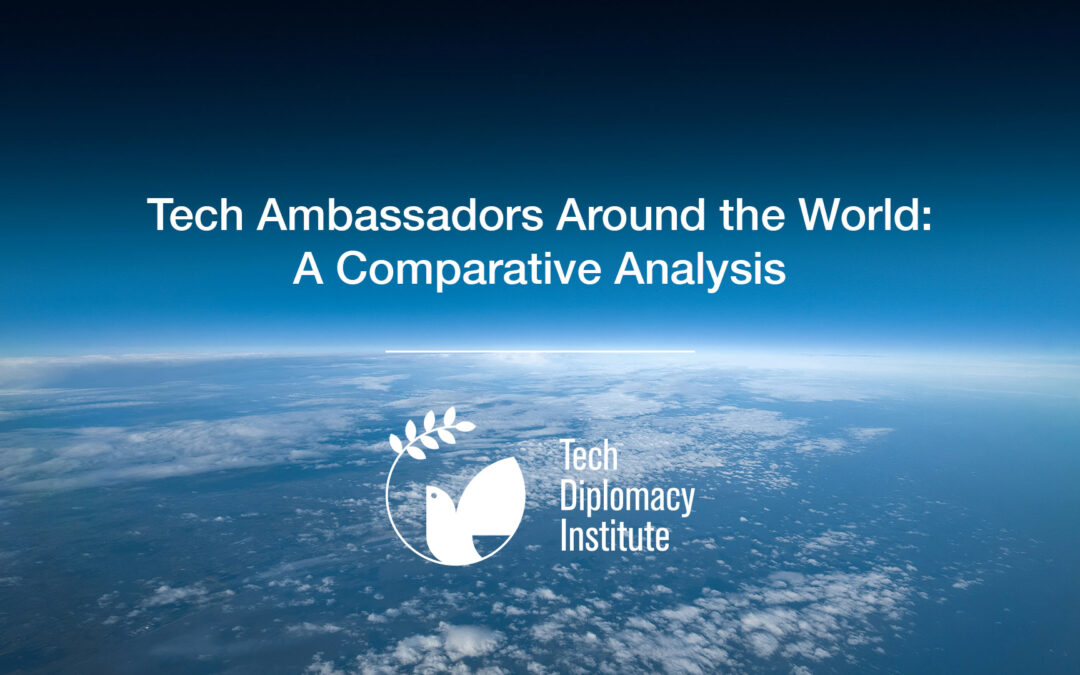Over twenty countries have established tech ambassador positions since Denmark’s groundbreaking 2017 initiative—a diplomatic revolution that signals universal recognition of technology’s transformative impact on global affairs. While nations share the conviction that traditional diplomacy cannot address Silicon Valley’s influence or AI governance challenges, their approaches diverge dramatically.
From Singapore’s tech hub ambitions to Kenya’s “Silicon Savannah” vision, each country adapts tech diplomacy to its unique context. These variations reveal how nations balance sovereignty with technological interdependence, offering crucial lessons for the future of international relations.
European Approaches: Pioneering Models and Institutional Innovation
Europe leads the tech diplomacy revolution, with Denmark’s 2017 experiment becoming the template for regional innovation. Under Anne Marie Engtoft Larsen, Denmark has refined its approach from confrontation to collaboration—building bridges rather than barriers with Silicon Valley giants. Their permanent presence in San Francisco signals commitment beyond traditional embassy work.
The UK took a different path. Joe White serves dual roles as consul-general and technology envoy, merging classical diplomacy with tech engagement. This hybrid model reflects Britain’s post-Brexit strategy: technology as the cornerstone of global competitiveness.
Austria’s “Open Austria” program focuses on the startup ecosystem—attracting investment, fostering innovation, and building pipelines between Vienna and Silicon Valley. France appointed a digital affairs ambassador who tackles everything from AI ethics to platform regulation. Estonia, true to its digital DNA, created a cybersecurity ambassador role that leverages its e-governance expertise.
The Netherlands integrated tech diplomacy into broader science and innovation policy through its counselor position. This holistic approach connects technology cooperation with climate action and sustainable development—proving that tech diplomacy extends beyond commercial interests to global challenges.
Asia-Pacific and Middle Eastern Developments
Asia-Pacific nations bring distinct perspectives shaped by their technological capabilities and strategic positions. Japan emphasizes multilateral cooperation and standards development, leveraging its industrial strength to shape global technology governance rather than chase individual company relationships.
Singapore punches above its weight as the gateway between East and West. The city-state attracts both Silicon Valley giants and Chinese tech firms, positioning itself as neutral ground for technology collaboration. Its diplomatic strategy mirrors its economic model: small, agile, and strategically positioned.
Israel builds on its “Startup Nation” brand, using tech diplomacy to strengthen security partnerships while promoting exports. Every technology engagement serves dual purposes—commercial success and strategic alliance building.
The Gulf states present a different narrative. The UAE and Saudi Arabia deploy tech ambassadors as architects of transformation, turning oil wealth into innovation capital. Their Vision 2030 and similar initiatives depend on technology partnerships to diversify beyond petroleum. These appointments signal serious commitment to knowledge economies, not just diplomatic fashion.
Latin America and Africa: Emerging Global South Leadership
Brazil pioneered Global South tech diplomacy through its ambitious Innovation Diplomacy Program. With 65 dedicated science and technology sections across 200 diplomatic missions, Brazil operates at unprecedented scale. Ambassador Eugenio Garcia, who served as tech envoy in San Francisco before becoming Director of Itamaraty’s technology department, and Brazil’s first Tech Ambassador, champions a crucial principle: technology governance needs voices beyond Silicon Valley and Brussels.
Brazil’s approach combines pragmatism with principle. While promoting partnerships and business collaboration, it ensures Global South perspectives shape global technology standards. This dual focus—economic opportunity and equitable governance—defines Latin American tech diplomacy.
Kenya has emerged as Africa’s tech diplomacy powerhouse. The July 2025 launch of its TechPlomacy Connective marks a watershed moment for the continent. Prime Cabinet Secretary Musalia Mudavadi embedded technology at the heart of foreign policy through Sessional Paper No. 1 of 2025, transforming Nairobi’s ambitions from regional hub to global player.
Ambassador Philip Thigo, Kenya’s Special Envoy on Technology, articulates a distinctly African vision: “Tech diplomacy must address more than technical specifications. It must uphold human rights, digital equity, and sustainability.” Kenya’s achievements validate this approach—becoming the only African member of the International Network of AI Safety Institutes and championing the UN’s first AI resolution.
Nairobi’s “Silicon Savannah” hosts over 300 startups, global tech giants, and world-class incubators. Through partnerships with UNEP and ITU on sustainable AI, and collaboration with Cassava Technologies on Africa’s first AI factory, Kenya demonstrates how developing nations can lead rather than follow in technology governance.
Institutional Placement and Organizational Models
Where countries place their tech ambassadors reveals their priorities. Denmark kept the position within foreign affairs but granted unusual autonomy. The UK’s dual consul-general/tech envoy role integrates technology into traditional diplomacy. Others embed tech diplomats in innovation or economic ministries, prioritizing commercial over political dimensions.
Matrix organizations have emerged as sophisticated solutions. Multiple ministries coordinate on technology issues, recognizing that AI governance touches defense, economy, education, and human rights simultaneously. While complex, these structures reflect technology’s cross-cutting nature.
Success patterns emerge from this diversity. Clear mandates matter more than organizational charts. Tech ambassadors need explicit authority, adequate resources, and direct access to decision-makers. Ambiguous roles produce ambiguous results.
Comparative Effectiveness Factors
Three factors distinguish successful tech diplomacy initiatives:
Personnel Quality: The best tech ambassadors combine diplomatic craft with technical credibility. They speak to engineers about protocols and to ministers about sovereignty—equally fluent in both worlds. Countries that recruit from technology sectors, not just foreign services, see better outcomes.
Strategic Focus: Effective programs pursue specific, measurable objectives rather than vague “innovation promotion.” Whether it’s Denmark’s value-based engagement or Kenya’s AI safety leadership, clarity drives impact.
Institutional Support: Tech diplomacy requires sustained political commitment. Countries treating it as an experiment fail; those embedding it in foreign policy succeed.
Regional Cooperation and Multilateral Coordination
Tech diplomacy increasingly operates through coalitions. The EU coordinates member states’ approaches, while informal ambassador networks share intelligence and strategies. Small countries amplify their influence through these alliances, proving that collaboration multiplies diplomatic impact.
Issues like AI governance, quantum computing standards, and digital taxation demand coordinated responses. No single nation—not even technological superpowers—can govern these technologies alone. Regional cooperation transforms individual initiatives into global movements.
Conclusion
The global spread of tech diplomacy reveals both convergence and divergence. While nations agree on the need for specialized technology engagement, their approaches reflect unique contexts, capabilities, and ambitions. Denmark’s collaborative model, Kenya’s inclusive vision, Brazil’s scale, and Singapore’s strategic positioning each offer lessons for the evolving field.
This diversity strengthens rather than fragments tech diplomacy. Different approaches address different dimensions of technology governance, creating a richer toolkit for managing humanity’s digital transformation. As technology continues reshaping power, economics, and society, these varied diplomatic innovations will determine whether we achieve democratic, equitable technology governance or surrender control to unaccountable forces.
The success of tech diplomacy’s global expansion depends not on standardization but on continued experimentation. Each country’s unique contribution enriches our collective capacity to govern technology for human benefit.
References
Austrian Foreign Ministry. (2023). Open Austria: Connecting innovation ecosystems. Republic of Austria Ministry of Foreign Affairs.
Bjola, C. (2023). Tech diplomacy and international relations in the digital age. Cambridge Review of International Affairs, 36(4), 512-531.
Garcia, E. V. (2024). A global south view of tech diplomacy. International Affairs Review, 12(3), 45-68.
Ministry of Foreign Affairs of Japan. (2024). Science, technology and innovation diplomacy strategy. Government of Japan.
Tech Diplomacy Network. (2024). Global tech diplomacy landscape report 2024. Tech Diplomacy Research Initiative.
Garcia, E. V. (2025). Brazil’s approach to tech diplomacy. Tech Diplomacy Forum Report. Tech Diplomacy Initiative.
Government of Kenya. (2025). Kenya launches TechPlomacy connective to champion inclusive digital future. Government Advertising Agency. Retrieved from https://gaa.go.ke

